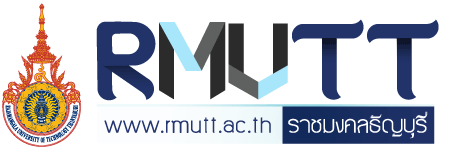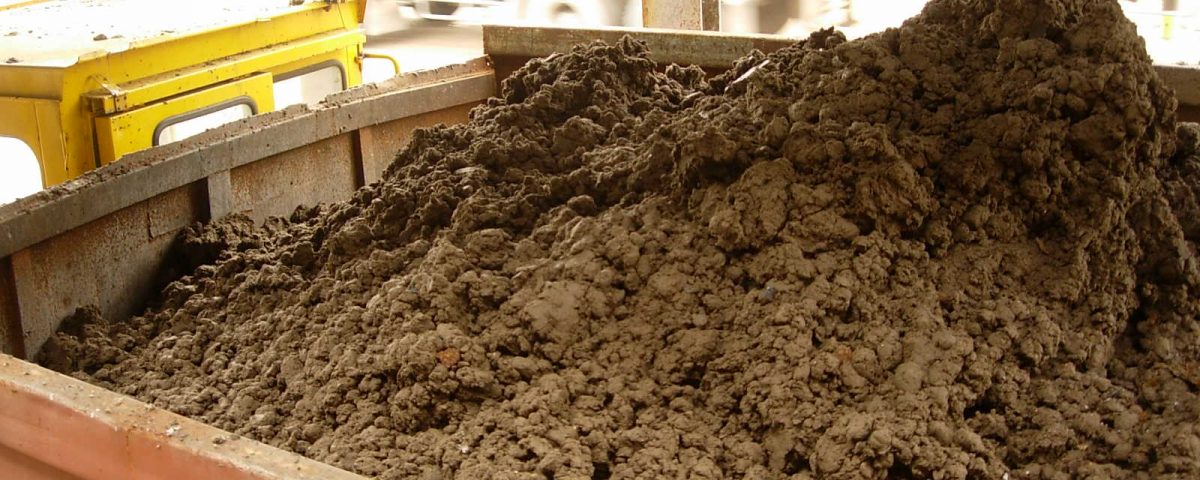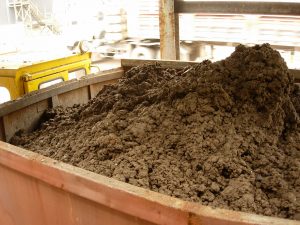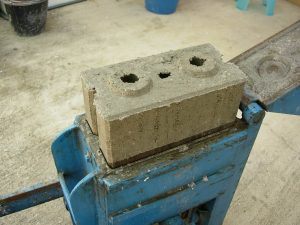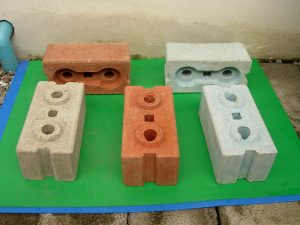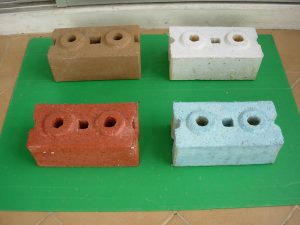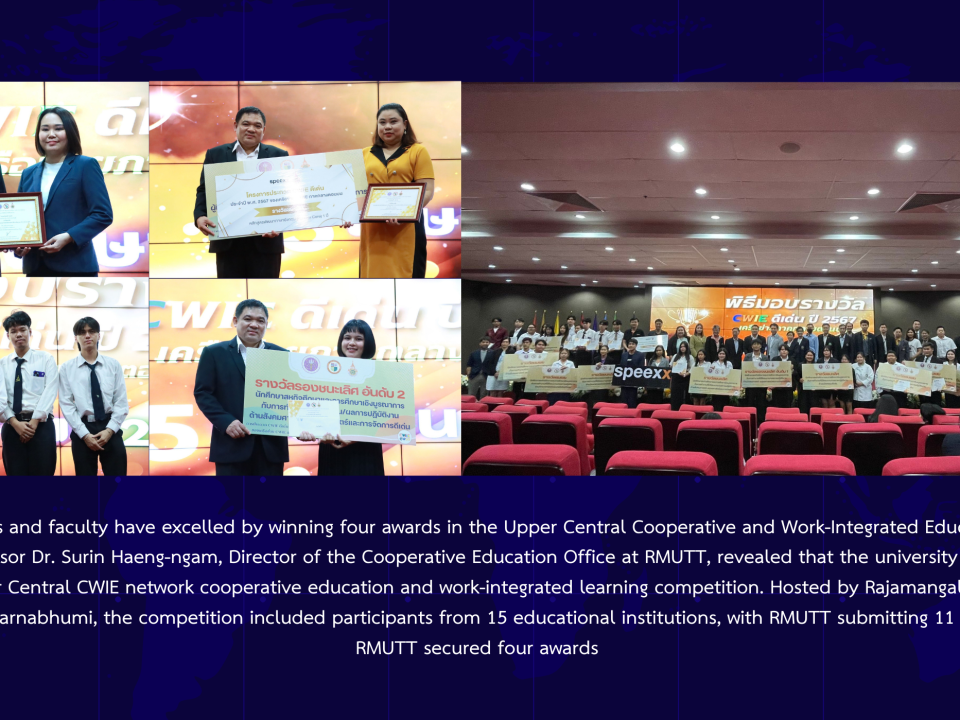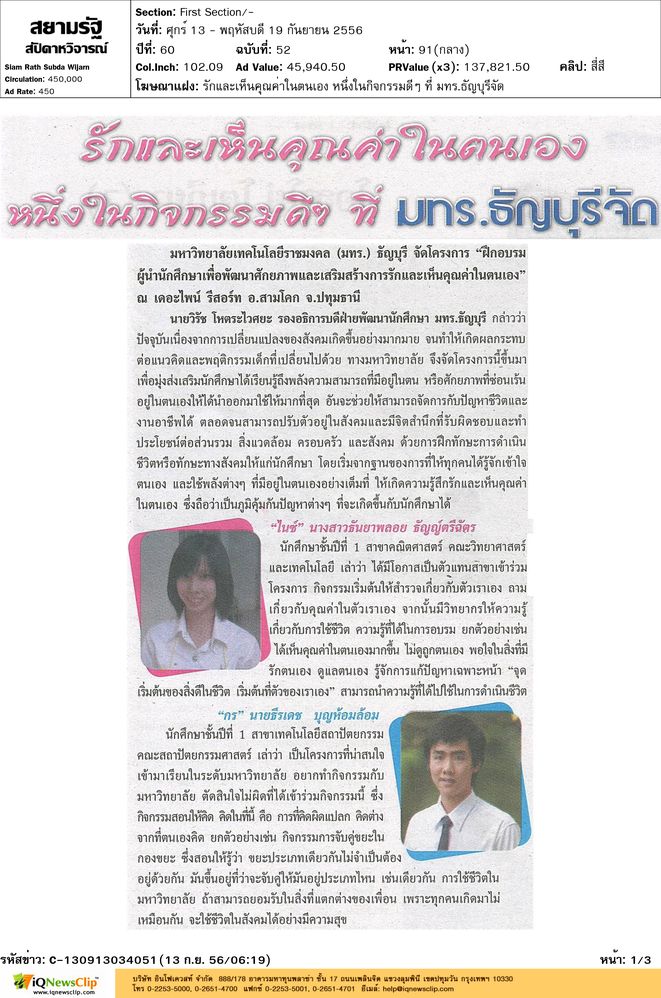
Self-Development Retreat Teaches Students about Personal Values
04/10/2013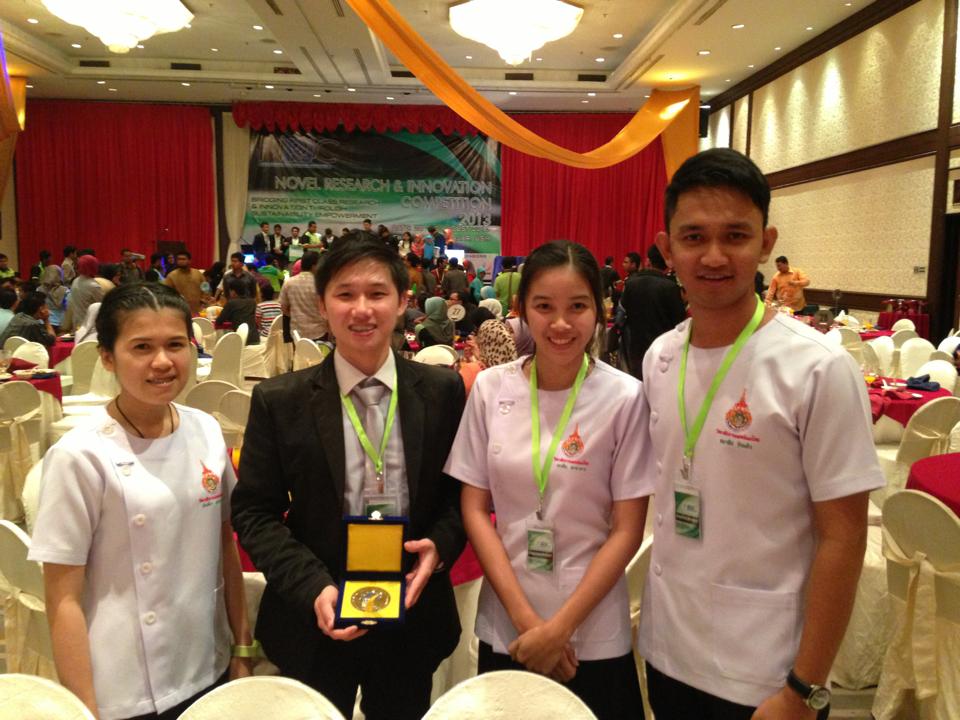
RMUTT Students Awarded Silver Medal from an International Research Competition
14/10/2013 “The industrial sector produces a large amount of waste, and most of it can still be reused in some other forms, in order to save the waste management cost and also increase the value of industrial waste,” said Wachira. “Corrugated paper factories, for example, produce about 1 metric ton of pulp waste everyday, and this is an abundant amount that goes to waste. That’s the reason why I decided to work with this material,” he said.
According to Wachira, corrugated papers have very fine fibers, called pulp, which is mostly made up of cellulose and lignin. “The pulp have low density and good heat resistant properties. When mixed with concrete, we can produce light-weight blocks for construction use, thus saving the waste management cost as well as the environment by reducing industrial waste,” he said.
“From our initial study, we found that commonly used construction blocks, such as red bricks, concrete blocks, and mixed clay and concrete blocks, are heavy and have high thermal conductivity values, compared to other modern construction materials. We wanted to develop a new material that has lower heat conductivity value, for outdoor construction work,” he explained.
Wachara’s research team experimented with two different formulas. The first formula had combinations of recycled pulp, concrete, and red soil, while the second formula combined concrete, sand, pigment powder, and recycled pulp. The team also experimented with the ratios of pulp per other ingredients, in order to achieve lower material density and lower thermal conductivity value. The blocks’ physical, mechanical, and heat conductivity properties were then tested after 28 days of curing.
Results showed that the final blocks displayed acceptable properties and passed the heavy metal contamination test for construction and building decoration materials. The new mixed pulp and concrete blocks have 34% lower thermal conductivity value, are 22.5% lighter, and display more intense red color pigment compared to other mixed red soil and concrete blocks (laterite-cement blocks) available in the market.
